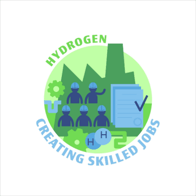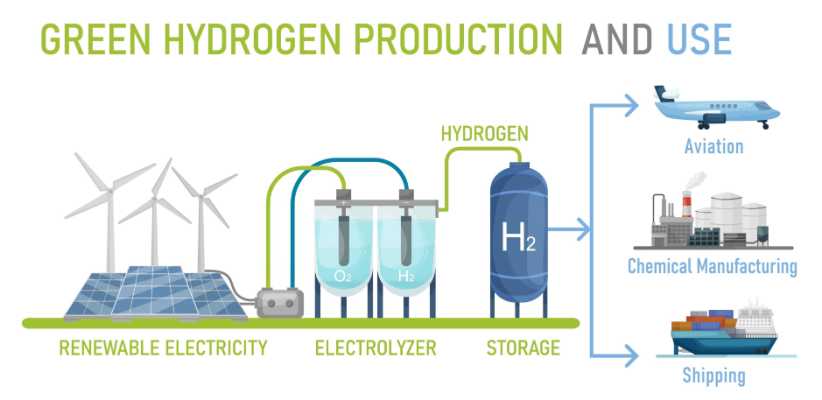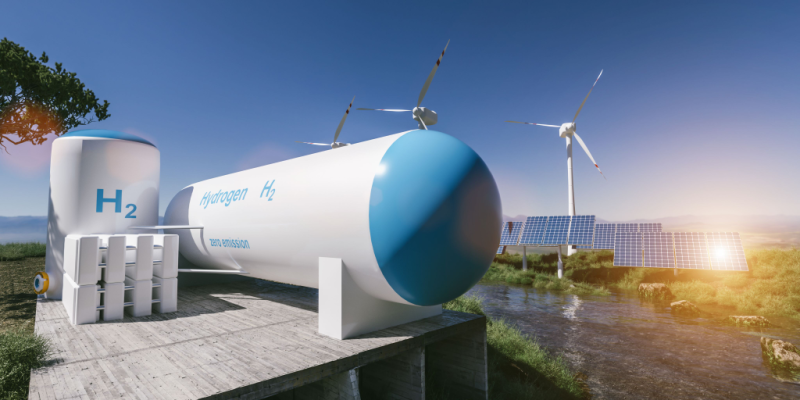
By
Nana Terra
August 23, 2022
Updated
November 20, 2024
Source: Tomasz Makowski/Shuttestock
Green hydrogen has been at the centre of the discussion and global strategies in the race toward decarbonisation in 2022. And as part of the plan, the workforce plays a crucial role in developing this emerging industry.
With a vision to be at the forefront of renewable hydrogen production and export, the Queensland State Government in Australia launched the Hydrogen Industry Workforce Development Roadmap 2022-2032 in a speech at the Australian Clean Energy Summit in July.
The document builds a pipeline of skilled, hydrogen-ready workers and sets out a range of short, medium and long-term actions.
Based on key insights from early industry players and training providers, combined with deep data analysis, the roadmap recognises the importance of having flexible skills, training options, tailored responses for local workforces, and attraction and retention strategies.
The established Gateway to Industry Skills Program will add hydrogen as a new industry allowing 30 schools and up to 2000 students to engage with this emerging industry.
Queensland’s Minister for Training and Skills Development Di Farmer said:
This roadmap is the first dedicated workforce development plan for the industry and sets a path to a strong and adaptable workforce for a safe and thriving Queensland hydrogen industry.
All Queenslanders should have the opportunity to reskill or upskill to advance their career and pursue new opportunities – that’s why the State Budget 2022-23 includes $1.2 billion for skills and training to help Queenslanders enter the workforce.
We have already set a strong foundation for the emerging hydrogen industry by investing $50 million in state-of-the-art infrastructure to support training in renewables and hydrogen, providing essential, hands-on experience with new and emerging technologies.
This includes:
- $20 million for Stage 2 of the Queensland Apprenticeships Centre at Beenleigh, including a Hydrogen Training Centre of Excellence that will provide apprentices with the skills and expertise to work safely with hydrogen.
- $17 million for the Pinkenba Renewable Energy Training Facility, training apprentices and qualified electricians to install, operate and manage solar and other renewable energy equipment safely.
- $10.6 million for the Hydrogen and Renewable Energy Training Facility at Bohle TAFE in Townsville.
- And $2 million to upgrade training facilities at Gladstone State High School to prepare students for future jobs in the hydrogen industry.
Why does the National Hydrogen Strategy matter?
The benefits of a clean hydrogen industry to Australia could be as high as $26 billion a year in additional GDP by 2050 and close to 17,000 new jobs across energy, transport and heavy manufacturing (such as steel). Watch the video below to learn more about Australia’s National Hydrogen Strategy:
Hydrogen jobs in demand
 Hydrogen career opportunities will be far-reaching, from design and construction through to manufacturing, transport and export. So whilst cross-skilling and upskilling will be required for many of the technical roles producing hydrogen in Queensland, the industry will also create many new jobs throughout the supply chain where this may not be necessary.
Hydrogen career opportunities will be far-reaching, from design and construction through to manufacturing, transport and export. So whilst cross-skilling and upskilling will be required for many of the technical roles producing hydrogen in Queensland, the industry will also create many new jobs throughout the supply chain where this may not be necessary.
The Regional Director from Airswift in Australia and New Zealand, Ryan Carroll, attended the Australian Clean Energy Summit when the workforce roadmap was launched and agrees it is crucial to developing a solid industry.
It was exciting to be with the Honourable Di Farmer at the Clean Energy Summit when the Hydrogen Industry Workforce Development Roadmap was launched. We, from Airswift, can already see that the appetite within the broader energy workforce is there to utilise transferable skills and play their part in the energy transition.
Workforce roadmaps such as this need to blend short and long-term initiatives acknowledging that competition for talent has been heightened and shows no sign of slowing down. Converting the appetite into a hydrogen workforce will require a multi-pronged approach looking at sophisticated employer value propositions (not a one size fits all), continued investment into training for both transitioning and graduate levels and the ability to engage international talent.
What I really like about the roadmap is it’s upfront commitment to local community inclusion and the use of data insights in it’s long-term planning. I am sure this will go a long way in de-risking the growth strategy and ensuring it’s long-term success.

Source: Double Brain/Shutterstock
Airswift can help you
We are currently partnering with companies in the sector. See below some of the roles and skillsets:
- Business Development Manager
- Project Development Manager
- Hydrogen Expert
- Solution Expert
- Process Engineer
- Project Manager
- Commercial Director
- Sales Director
- Electrolysis Specialist
- Product Manager
- Senior Engineer
Green hydrogen projects to watch in 2023
Australia is starting to make waves in the Hydrogen space, with 64 projects in the pipeline. Around half of these are green hydrogen. Our Recruitment Manager, Laura Wilson, is excited about the industry.
With Developers purchasing land across Australia and New Zealand, each Green Hydrogen plant is estimated to cost over $ 2 billion to be fully functional. We also still have some genuine technical challenges, such as finding financiers to back projects, safety etc. We also still need to consider the manufacturing supply of Electrolysers and the technical safety issues around hydrogen in general. Exciting times ahead!
Read about the top 3 green hydrogen projects starting in 2023.
1. Kapuni Green Hydrogen Project
2. Yara Pilbara Renewable Hydrogen Project
3. Gladstone Green Hydrogen Project

Source: Audio und werbung/Shutterstock
1. Kapuni Green Hydrogen Project
This project will utilise 16 MW of wind energy to produce green hydrogen in Taranaki, New Zealand, decarbonising about 2% of the ammonia-urea plant capacity. The turbines will supply renewable electricity directly to Ballance's Kapuni site and electricity to the grid, with the ability to provide renewable electricity to up to 24,000 homes during peak times.
Electricity will also be used to produce green hydrogen by electrolysis that can be made at flexible times such as off-peak times. The zero-emission green hydrogen supply will be used to replace imported diesel used for heavy transport.
Operated by Hiringa and Ballance Agri Nutrients, the project will support significant regional economic growth through procurement, employment and opportunities for local contractors, as well as leveraging existing energy sector infrastructure and expertise.
2. Yara Pilbara Renewable Hydrogen Project
With a capacity of 330MW solar generation featuring 100 MW battery storage near Morgan in South Australia, the project will include 3.4 million solar panels and 1.1 million batteries.
The demand for electricity in South Australia can reach more than double a typical day's demand during extremely hot periods when air conditioners are increased.
Proposed by Lyon Group, the project is designed to provide extra generation to meet peak demand. Riverland Solar Farm and Storage remains on hold, and the completion date is slated to 2022.
3. Gladstone Green Hydrogen Project (Sumitomo)
Japan’s Sumitomo Corp. and Anglo-Australian mining giant Rio Tinto are partnering to develop a solar-powered 2 MW green hydrogen production facility at the miner’s Yarwun refinery in the Australian state of Queensland.
The pilot project will explore the potential of hydrogen as a replacement for gas in the alumina refining process and is expected to produce up to 300 tons.
With an exceptional Port and the ability of the region to develop an abundance of clean energy, Gladstone is positioned to be one of the leading Australian hydrogen exporters by 2030.
Want to know about solar or wind energy in Australia? Read about what projects can make Australia a renewable energy superpower.
Airswift can help you to deliver green hydrogen projects
From the offices in Brisbane and Perth, our Renewable Energy division has been the best-performing and fastest-growing division within ANZ since 2019.
Our Power, Infrastructure & Mining Recruitment Director, Liam Dutton, said:
The demand for staff in the coming years in the hydrogen sector is going to be extremely high and to meet the demand, the strategy will have to incorporate a mixture of overseas candidates as well as local candidates with transferable skills from other sectors such as Mining and Oil & Gas. Airswift is positioned extremely well in ANZ for the upcoming candidate demand into Green Hydrogen as we have a global reach, with over 60 offices and our local talent pools span across all the relevant sectors such as Renewable Energy, Mining and Oil & Gas.
Looking for the best talent for your project? Get in touch!
Want to know more about green hydrogen and clean energy recruitment? Read also:


